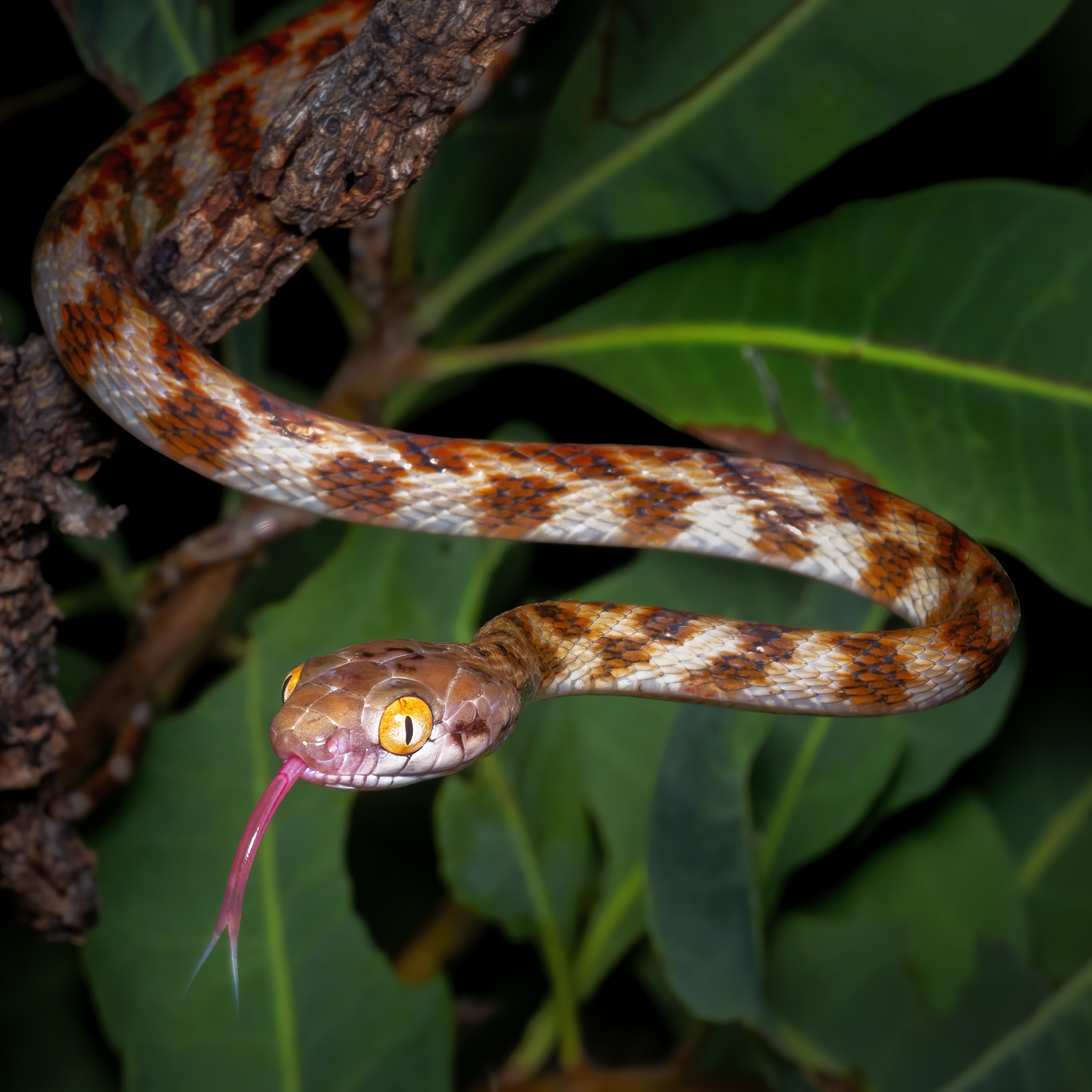The Brown Tree Snake is a stunningly coloured arboreal snake that can be found in the coastal regions of north and north-eastern Australia, as well as much of the South Pacific. Also referred to as catsnakes – owing to their vertical, catlike pupils – they pose little danger to humans due to the unique positioning of their fangs.

Brown Tree Snakes belong to the Colubridae family of snakes, meaning that they have fangs located at the back of the jaw and a less sophisticated method of envenomation, relying on grooves along the fang to transport venom. In comparison, the highly dangerous Elapidae family (including Brown Snakes and Taipans) have hollow fangs at the front of the jaw, allowing for much more direct transfer of venom.
Despite there being over 1,700 species of Colubrid worldwide, making up around two-thirds of all snakes, only 6 out of Australia’s more than 180 snake species are Colubrids. In contrast, we have 109 Elapids.
If you’re at all scared of snakes, you should probably be nicer to our friend the Brown Tree Snake, and wish that more of Australia’s snakes were like him!*

Snakes sense tiny vibrations in the air when hunting, and then will ‘taste the air’ with their tongue to see if they can narrow in on their prey. So the best way to get a photo of a snake with its tongue out is to gently disturb the air around it and snap a picture when it reacts to the sensation.
Of course, it’s vital that you know what snake you’re dealing with and can identify defensive behaviours before approaching any wild snake.

Despite being a native species with a range of natural predators here in Australia and surrounds (and despite being absolutely adorable, as this image clearly shows), this snake was responsible for decimating the native wildlife of the island of Guam in the years following WWII.
Well… not THIS snake, just this species of snake.
Transported accidentally on a cargo ship from somewhere in the South Pacific, the Brown Tree Snake thrived on the island, resulting in the local extinction of most mammals, the loss of countless pets, and even widespread power outages. Snakes on the island grew to almost double their usual size due to the abundance of prey and lack of predators.
The snake represents a similar threat to countless other islands with similar habitats, most notably Hawaii. Consequently, trained dogs are now responsible for searching cargo ships departing from Guam and sniffing out any secret stowaway snakes!
–
Brown Tree Snake (Boiga irregularis), Berry Springs & Kakadu National Park, Australia
–
*Note: You should be nicer to our Elapids too. It’s not their fault they’re wildly venomous, and they’re only ever trying to protect themselves. We often reframe defensive behaviour as aggression. If you’re scared of snakes, it’s important to realise that they are never, ever being aggressive towards humans. Stay out of their way, and they’ll stay out of yours.


